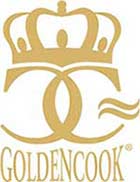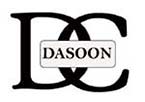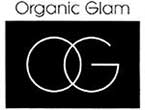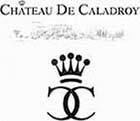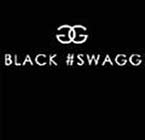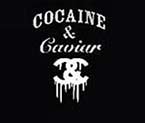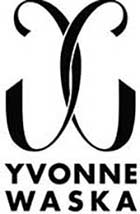Article
Chanel's logo cancels registration for interlocking figurative design
The General Court's 18 July 2017 decision in Chanel v EUIPO, case T-57/16, demonstrates that broad protection may be available for brands’ monograms in Europe, in this case Chanel’s intertwined “C”.
The dispute which led to the Chanel v EUIPO case
In 2010, an individual named Li Jing Zhou registered the following "ornamentation" as a Community design:

Three years later, Chanel filed an action for invalidity on the grounds that the above design lacked novelty and individual character, relying in particular on its own monogram, which had been registered as a trademark in France since 1989:
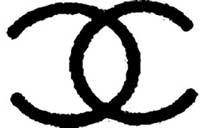
Both the Cancellation Division and the Third Board of Appeal of the European Union Intellectual Property Office (EUIPO) rejected Chanel's action, on the grounds that Chanel's trademark did not deprive the later design of novelty or individual character. Chanel appealed to the General Court.
The General Court judgment
Before the General Court, Chanel was successful. The General Court concluded that the contested design lacked individual character in light of Chanel's famous logo and overruled the Board of Appeal.
In its reasoning, the General Court restated the four-step test for the assessment of the individual character of a design, which it said must consider:
- the sector of the products on which the design is to be incorporated or applied;
- the informed user of the products at stake, as well as the extent of its knowledge of the prior art and its level of attention when comparing the designs;
- the designer's level of freedom when creating the litigious design; and
- the result of the comparison of the designs taking into account the relevant sector for the products, the designer's level of freedom and the overall impressions produced on the informed user by the contested design and by any prior design publicly disclosed. The Court further specified in that respect that the more a designer is given creative freedom, the less minor details between two designs are likely to produce a different overall impression.
Based on the above four steps, the General Court found that:
- the litigious design as an ornament could be applied on a wide-range of products;
- the designer was granted a large amount of creative freedom [38 and 56]; and
- the two drawings presented strong similarities, contrary to the Board of Appeal's finding that the drawings were fundamentally different, as Chanel's monogram was made of two inverted "c" displayed as an ellipse in its central point, whereas the contested Community design, made of two inverted "3", showed an infinity symbol.
The General Court's conclusion on the similarities of the designs was partly influenced by:
- the well-known character of Chanel's logo such that the contested design "may be seen, to a certain extent, as a creation inspired by the idea of Chanel's monogram" and that "the designer did not differentiate enough the drawing from Chanel's monogram" [55]; and
- the fact that the design could be applied in different sizes, both horizontally and vertically, on various products. (Horizontally, the design could be considered as a mask, but vertically, the drawings were extremely similar, due, notably, to the central parts that were both made of ellipse designs. The differences between the designs were less likely to be perceived by the informed user when the contested design is used at a 90 degree orientation and in diverse sizes [55]).
What does this mean for monogram rights?
The General Court's decision seems to broaden the protection granted to Chanel's monogram at the European level.
In other cases, the EUIPO has repeatedly rejected oppositions filed by Chanel on the basis of its same trademark, notably against the registration as a trademark of the following signs:
In contrast, the French IP Office usually tends to permit broad protection for well-known logos. For example, it has refused to register the following signs on the basis that the public would immediately associate it with Chanel's logo, despite additional elements (written and figurative) or differences between the intertwined letters:
Likewise, French judges have held that the use of a design composed of two letters "o" intertwined, and affixed on fashion accessories, infringed Chanel’s trademark rights on its well-known monogram[9], and although it could be argued that the use of combined letters as an ornament does not qualify as trademark use and thus as an infringement[10].
The General Court's 18 July 2017 decision is arguably a landmark judgment. Apparently aligning the CJEU's approach with that of the French courts, the decision indicates that throughout the EU, strong protection is now available to the owners of well-known brands consisting of monograms. It strengthens the case for well-known brands such as Chanel seeking the cancellation of designs based on prior trademark rights.
The approach could be criticized for permitting an indefinite monopoly for the use of two interlocked characters (a design) in a logo, despite the fact that design protection is limited in term. On the other hand, brands that are recognizable by reference to a device arguably should be protectable under trademark law.
In any case, following the General Court's decision in the Chanel case, greater interplay may be seen between intellectual property rights when establishing the reach of protection afforded to a brand under EU law. There may also be scope for interplay in some cases between intellectual property protection and national laws providing redress for unfair competition.
Footnotes
[1] EUIPO, Board of Appeal, 22 April 2016, No R1449/2015-4
[2] EUIPO, Board of Appeal, 29 March 2013, No R 0846/2012-4
[3] EUIPO, Opposition Division, 24 October 2012, No B 1 979 510
[4] EUIPO, Board of Appeal, 15 September 2011, No R 2275/2010-1
[5] INPI, 20 August 2014, No 14-0991
[6] INPI, 4 June 2014, No 13-5122
[7] INPI, 3 June 2014, No 13-5123
However, it can be noted that the French office denied any likelihood of confusion between Chanel's logo and the following sign which, when seen horizontally, is almost identical to Chanel's logo.
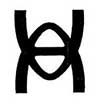
In this respect it should be underlined that when assessing the merits of a trademark opposition, the examiner can only analyze the application as filed and cannot extrapolate on the use of the sign horizontally or vertically as the General Court did in the aforementioned case (INPI, 16 January 2009, No 08-2523).
[8] INPI, 27 February 2013, No 12-3725
[9] Paris Court of First Instance, 5 February 2016, No 14/11490. Contra: French Supreme Court, Criminal Chamber, 15 May 2012, No 11-86196 (regarding the use of a sign made of two “c”)
[10] Paris Court of First Instance, 30 March 2017, No 15/05884
CECI NE CONSTITUE PAS UN AVIS JURIDIQUE. L'information qui est présentée dans le site Web sous quelque forme que ce soit est fournie à titre informatif uniquement. Elle ne constitue pas un avis juridique et ne devrait pas être interprétée comme tel. Aucun utilisateur ne devrait prendre ou négliger de prendre des décisions en se fiant uniquement à ces renseignements, ni ignorer les conseils juridiques d'un professionnel ou tarder à consulter un professionnel sur la base de ce qu'il a lu dans ce site Web. Les professionnels de Gowling WLG seront heureux de discuter avec l'utilisateur des différentes options possibles concernant certaines questions juridiques précises.



